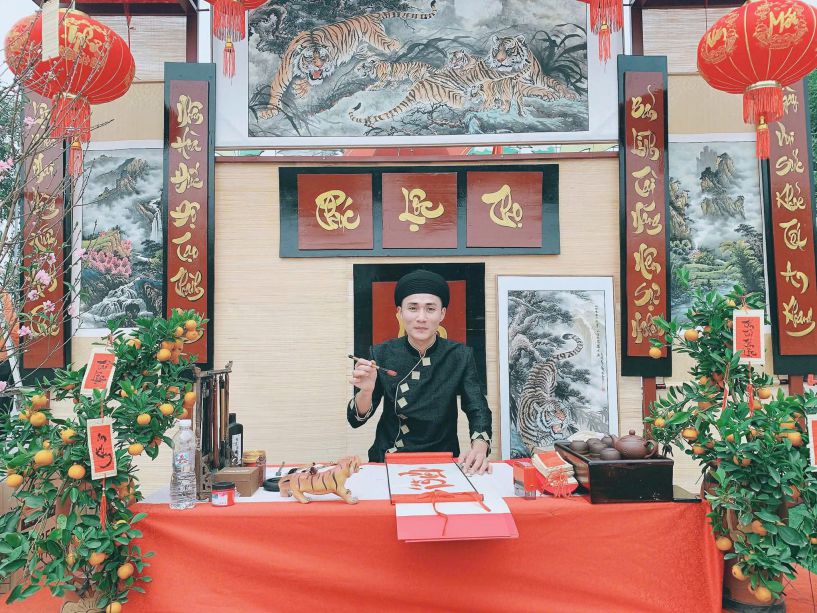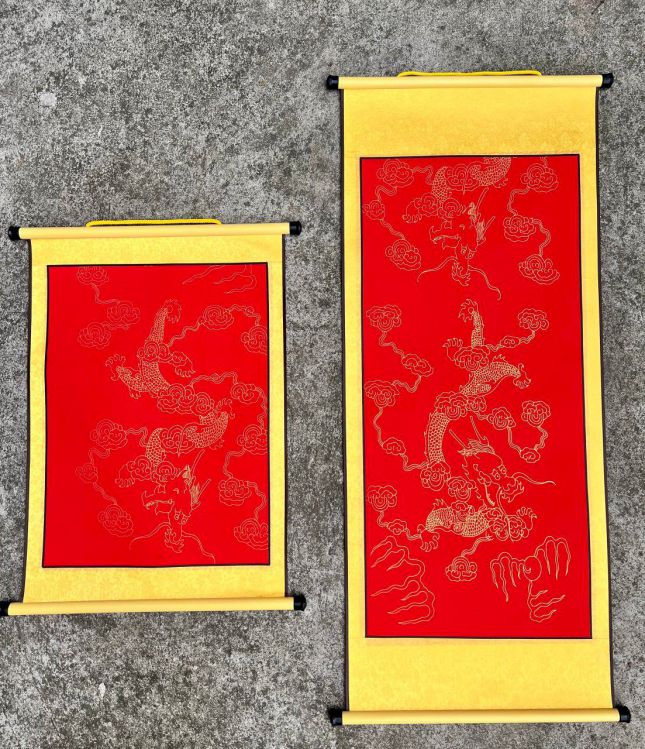There, the old man sat nghiem tucly next to the letter, carefully taking a pen and writing a red line, sending wishes for peace and prosperity. And behind that sacred painting is the quiet hands of silk weaving workers - a traditional profession that few people are familiar with but plays a special role in Vietnamese cultural life.
Aspiration to keep the profession left by our ancestors
Mai Tan Truong, a young man born in 1994 in Nga Son commune (Thanh Hoa), is one of the rare young people who choose to stick with the silk weaving profession. Originally from a family with many generations preserving the homeducated paper and silk plank, Truong soon absorbed his love for each silk fiber, silk plate, each meticulous manual step that his father taught him. "I love the job not only because it is a livelihood, but because silk silk silk is also a part of cultural memories that need to be preserved" - Mr. Truong shared.
Silk records are not just fabric or paper. Since ancient times, this profession has been associated with the tradition of calligraphy and graphology. The reed stewed paper is made from the shell of the Do tree, through dozens of stages such as digging, filtering, drying, pressing, then coating the thin silk layer on top. It is this special texture that helps the surface to be soft, absorbs the ink well, preserves the spirit of the wording and the elegance of the style of the village chief's pen. During holidays, silk bells are also a sacred gift to wish life, celebrate a new home, and convey morality and personality through each word.

As cheap industrial paper and modern printing are on the rise, the craft of making handmade silk forms is increasingly narrowing. "The biggest difficulty is competing with mass-produced products. Industrial silk is only half priced, the design is eye-catching. Meanwhile, a complete handmade silk plan requires at least a few days of effort" - Mr. Truong confided.
Many young people are hesitant to enter the profession because of unstable income. However, Truong chose the opposite path. He spent nearly 10 years studying and perfecting his skills, not afraid of failure to perfect the technique of making silk planks to strict standards. That is why the silk table of the School is trusted and chosen by many prestigious people in the writing world, considered a "companion" to convey the soul of words.
The dream of spreading silk
Not stopping at preserving the old profession, Truong also cherishes the dream of spreading silk members closer to the community, especially the younger generation. He took advantage of social networking platforms to share his work process, post videos instructing on recognizing real and fake silkcharts, and explain the cultural meaning of each craft detail.
"I want young people to understand that each silk record is a legacy left by their ancestors, and cannot be replaced by lifeless industrial printing products" - Mr. Truong said.
In the digital transformation era, silk b sides also have to find ways to adapt. For the past few years, many artisans and craftsmen have participated in exhibitions and opened classes to experience making silk panels in schools and museums. The school hopes to have more educational programs combined with practical experiences, so that students can directly touch the silk film and understand the value of manual labor.

"If you only look at the screen, they will think silk planks are expensive decorations. You have to hold it up, smell the smell of silk and the smell of ship's squid, to find it close and precious" - Mr. Truong affirmed.
Above all, the young man believes that no matter how modern society is, there will still be room for sparse products from the hands and heart. The handmade silk forms not only have material value but are also a message of patience, appreciation for their roots, and attachment to sustainable values.
"Young people should be proud of the cultural heritage of the nation. If no one kept their profession, no one told the story, then one day, the silk planks would only be in the old book" - Mai Tan Truong sent a message.
In the midst of the crowded streets, every spring, red lines appear on the white silk, as a silent reminder of the origin and cultural beauty that young people like Mai Tan Truong are striving to preserve and spread. A quiet but proud journey, so that the profession of making silk planks cannot be forgotten in Vietnamese Tet memories.










